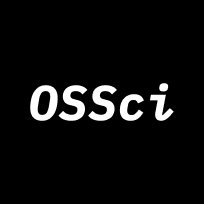Mapping UVM’s Contributions to Open Source at the First PyData Vermont
It was an absolute pleasure to be part of the first PyData Vermont on July 29th and 30th. We were joined by Ellie DeSota, co-founder of the pending 501c3 and silver sponsor of the event: The Science Coordination Infrastructure and Operating Systems Collaborative (SciOS).
We took the opportunity to do some live mapping of the Vermont technology and open source ecosystem, and we look forward to expanding it in the coming months!
I helped lead a BoF on MOSS, and SciOS coordinated an hour and a half workshop on needs and outputs related to the map. The BoF gave us two full pages of suggestions I can’t wait to explore, while we left the SciOS workshop with an early sketch of a tangible technology-based use-case for the MOSS database: a security and funding risk assessment dashboard. More on this in the future!
We also took the opportunity to showcase some work we’ve been doing regarding mapping institutional contributions to open source. Find those images at the end of this update. There will be a future post on how exact we’re doing this in the coming weeks, after we experiment with a few more institutions.
Some lessons learned from our first mapping of an academic subsystem in open source:
There is not a lot of continuity across an institution with regards to repos, tags, keywords, practices, etc. This means we will have to personally tailor each mapping for each institution. We will also have to continue iterating, and integrate user verification of relationships soon!
Showing the result of that lack of continuity can leave an impact on an institution (and lead, perhaps, to changes within the institution). For example, toggling the map to view UVM associated repos with a requirements file drastically reduces the number… from over 100 to about a dozen. A citation.cff query reduces the number of projects to 0. Perhaps faculty will begin to encourage their students to include their relevant files in their repos moving forward.
A core hypothesis of MOSS is that demonstrating the value of certain practices by elevating projects, organizations, people, etc. that follow them will encourage best practices to emerge from the bottom up instead of having them imposed from the top down, or suggested without practical reason. This first test-case seems to support this hypothesis.
There is a lot of excitement how MOSS and the database on which it is built can impact institutions.
Projects that have come out of UVM and the domains in which they are used.
Projects that have come out of UVM and the domains and fields in which they are used.
People at UVM that contribute to open source software, and the domains in which that software is used.
The relationships for institutions we are mapping so far. SDG stands for the UN’s 17 Sustainable Development Goals.







